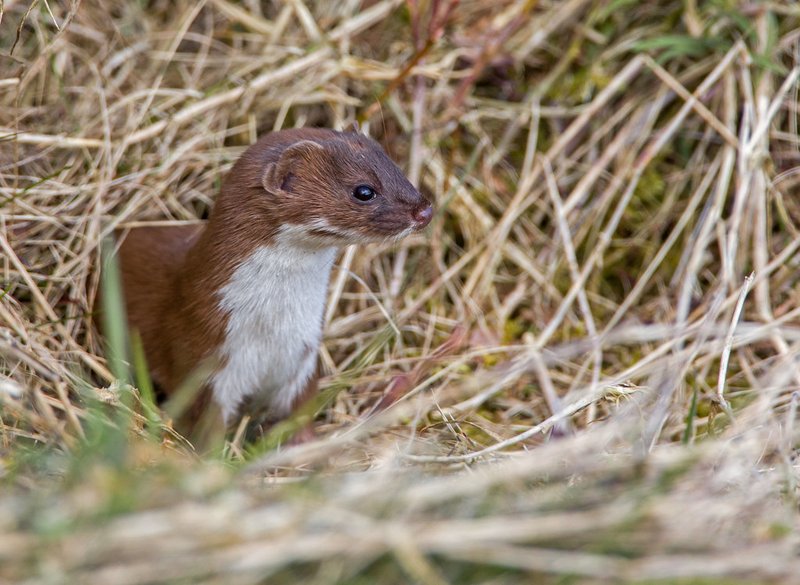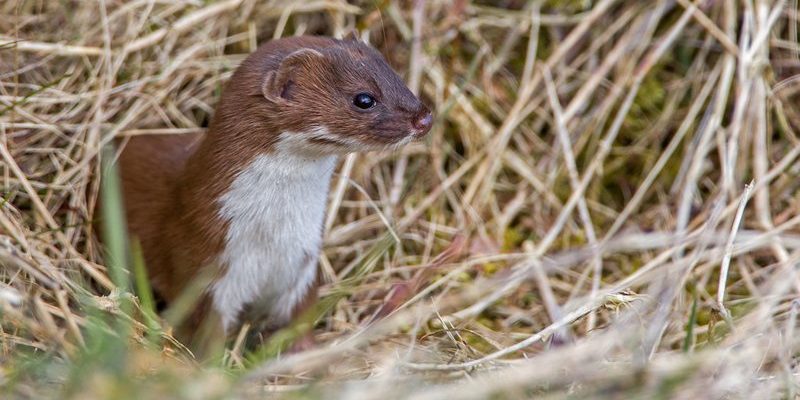
When you think about weasels, you might picture a sneaky little creature darting through tall grass or sneaking into your garden. But there’s so much more to these fascinating animals! Weasels belong to the Mustelidae family, which also includes otters, ferrets, and badgers. They are small, agile carnivores that have adapted to various environments around the world. With their long bodies, short legs, and pointed snouts, weasels are built for speed and stealth, making them highly effective hunters.
These creatures can embody an adorable yet fierce persona. Despite their small size—often no longer than a loaf of bread—they are known for their boldness and tenacity when hunting prey. Weasels are like the ninjas of the animal kingdom, smoothly moving through their habitats while keeping a watchful eye for small mammals, birds, and even insects. You might be surprised to know that they can take on animals much larger than themselves, which only adds to their intriguing nature!
Physical Characteristics of Weasels
Weasels are truly remarkable little animals, and their physical traits set them apart from other creatures. Most notably, they have elongated bodies that help them squeeze into tight spaces. On average, a weasel can range in size from about 6 to 12 inches long, and their tails can add another 3 to 5 inches. Their slender bodies are typically covered in soft fur that varies in color by species, including shades of brown, white, and even yellowish tones. Think of them as living, breathing little pieces of art—nature’s version of an elegant design.
One interesting feature of weasels is their ability to change color with the seasons! In colder areas, some species, like the stoat or short-tailed weasel, develop a beautiful white coat in winter, which helps them blend into the snowy landscapes. In summer, they return to their brown or tawny hues, enabling them to camouflage in grass and underbrush. This transformation not only enhances their hunting skills but also keeps them safe from potential predators.
Habitat and Distribution
Weasels are surprisingly adaptable and can be found in a range of habitats across the globe. From dense forests to open grasslands, weasels thrive in various environments. They prefer places with abundant cover, like bushes or rocky areas, which provide them with shelter and hunting grounds. If you’ve ever walked through a meadow or ventured into a wooded area, you’ve likely passed through a weasel’s territory without even knowing it!
Different species of weasels inhabit various regions; for example, the long-tailed weasel can be found throughout North America, while the European weasel roams across Europe and parts of Asia. There’s even the elusive mountain weasel, residing in the mountainous areas of Central Asia. Weasels are incredibly versatile, and their ability to adapt to different environments is a testament to their survival skills.
Diet and Hunting Behavior
Weasels are opportunistic hunters with a diet that primarily consists of small mammals, such as rodents, rabbits, and birds. They have a high metabolism, which means these little powerhouses need to eat continuously to maintain their energy levels. Imagine trying to keep up with that kind of energy as you scurry through the underbrush!
One of the most fascinating aspects of a weasel’s hunting behavior is their incredible speed and agility. Unlike larger predators that might stalk and ambush their prey, weasels rely on their quick reflexes and stealth. They often sneak up on unsuspecting animals and launch a surprise attack. Their sharp teeth and strong jaws allow them to deliver a swift bite, which is essential for subduing prey. Watching a weasel hunt is like witnessing a masterclass in agility and precision!
Reproduction and Lifespan
When it comes to reproduction, weasels have a rather interesting approach. Breeding season varies by species and can occur between late winter and early spring. After a gestation period of about 30 to 40 days, female weasels give birth to a litter of 3 to 7 kits, depending on the species. These tiny bundles of fur are born blind and helpless, requiring their mother’s care and protection.
The kits grow quickly and start venturing out of the den by the time they’re a month old. Once they’re old enough to hunt, around 3 to 4 months, they begin learning the ropes from their mother. Wild weasels typically have a lifespan of 1 to 3 years, though some may live longer in protected environments. It’s a tough world out there, and every day is a new adventure for these small predators!
Weasels in Culture and Folklore
Throughout history, weasels have appeared in various cultures and folklore, often embodying traits like cunning and cleverness. In some traditions, they are viewed as symbols of deceit, while in others, they represent resilience and adaptability. For instance, in Native American culture, weasels are regarded as powerful spirit animals, offering guidance and protection. This duality reflects how weasels are perceived across different societies and contexts.
You might also be surprised to learn that weasels frequently pop up in children’s stories and cartoons. They are characterized as mischievous and sneaky, often getting themselves into amusing predicaments. This playful portrayal captivates the imagination, showing how these small animals have found their way into our hearts and minds. Their unique characteristics and behaviors are simply too fascinating to ignore!
| Characteristic | Details |
| Size | 6 to 12 inches long (tail can be 3 to 5 inches) |
| Coloration | Brown or tawny in summer, white in winter |
| Diet | Small mammals, birds, insects |
| Habitat | Forests, grasslands, mountains |
| Lifespan | 1 to 3 years in the wild |
Conservation Status
Overall, weasels are not currently considered endangered. However, their populations can be affected by habitat loss, hunting, and climate change. As their natural habitat gets disrupted, weasels may struggle to find food and shelter, which can lead to population declines. Conservation efforts are important to help maintain the balance of these ecosystems and ensure that weasels continue to thrive.
There are specific protections in place for certain species, especially those that are more vulnerable. For example, the Stoat is protected in some regions due to its declining numbers. Conserving natural habitats, promoting biodiversity, and educating the public about the importance of weasels can all contribute to their preservation. Every little bit helps in ensuring that these small yet mighty predators endure for generations to come!
Why Weasels Matter
So, why should we care about weasels? For one, they play a crucial role in their ecosystems. As predators, weasels help control populations of small mammals, which can prevent overgrazing of plants and maintain the health of their environment. By keeping prey populations in check, weasels contribute to a balanced ecosystem, supporting biodiversity and the overall health of the habitats they occupy.
Moreover, weasels inspire curiosity and wonder. Their unique behaviors, adaptations, and roles in folklore make them an important part of the natural world. They teach us about resilience, agility, and the interconnectedness of life. Plus, who wouldn’t be fascinated by these small yet feisty creatures? Embracing the presence of weasels can deepen our appreciation for wildlife and encourage us to protect the diversity of life around us.
FAQ
What do weasels eat?
Weasels primarily consume small mammals, birds, and insects. Their diet is highly adaptable and varies according to what is available in their environment. Some common prey includes mice, voles, and small rabbits. Weasels are known for their ability to hunt animals larger than themselves, making them formidable hunters despite their small size.
How fast can a weasel run?
Weasels are incredibly agile and can run at speeds of up to 10 miles per hour. This speed, combined with their quick reflexes, allows them to catch prey efficiently and escape potential threats. Their small size helps them navigate through dense vegetation and tight spaces in pursuit of food.
Are weasels solitary animals?
Yes, weasels are generally solitary creatures. They prefer to hunt and live alone, though they may occasionally come together during the breeding season. After mating, the female typically raises the young by herself, ensuring the kits are safe and well cared for until they are old enough to fend for themselves.
Do weasels make good pets?
While weasels can be cute and fascinating, they are not typically kept as pets. They are wild animals with specific needs and behavioral traits that make them challenging to care for in a domestic setting. Moreover, their instincts to hunt and roam may lead them to cause trouble in a household environment. It’s best to admire weasels in their natural habitats.
How do weasels communicate?
Weasels communicate primarily through vocalizations, scents, and body language. They may make various sounds, including chirps, growls, and hisses, to express distress or alert others to danger. Moreover, they use scent marking to establish territory and communicate with potential mates.
What threats do weasels face?
Weasels face several threats, including habitat loss due to human development, predation by larger animals, and hunting. Climate change and environmental pollution also pose risks to their populations. To help protect weasels, it’s essential to conserve their habitats and promote biodiversity in ecosystems.
Can weasels swim?
Yes, weasels are excellent swimmers! They can navigate through water with ease, using their agility to escape predators or hunt aquatic prey. Their bodies are streamlined for both running and swimming, making them versatile hunters in diverse environments.
How long is a weasel’s lifespan in the wild?
Wild weasels typically live for about 1 to 3 years. However, their lifespans can vary based on factors like environmental conditions, food availability, and predation. In protected environments, some weasels may live longer. Understanding their challenges can help us appreciate their resilience in the wild.
What is the difference between a weasel and a ferret?
Although weasels and ferrets belong to the same family (Mustelidae), they are different species. Weasels are generally smaller and have a more slender body shape, while ferrets are domesticated animals with a stockier build. Ferrets are often kept as pets, whereas weasels are wild creatures that thrive in natural habitats.
How do weasels adapt to their environments?
Weasels have developed various adaptations to thrive in their environments, including their camouflage fur, agility, and hunting skills. Their ability to change color based on the season helps them blend into their surroundings, making them effective hunters and providing protection from predators. These adaptations are crucial for their survival in diverse habitats.
Are weasels endangered?
Most weasel species are not currently endangered, but some face threats from habitat loss and hunting. Conservation efforts are important to protect vulnerable populations and ensure weasels continue to thrive in their ecosystems. By promoting awareness and habitat preservation, we can contribute to their long-term survival.

